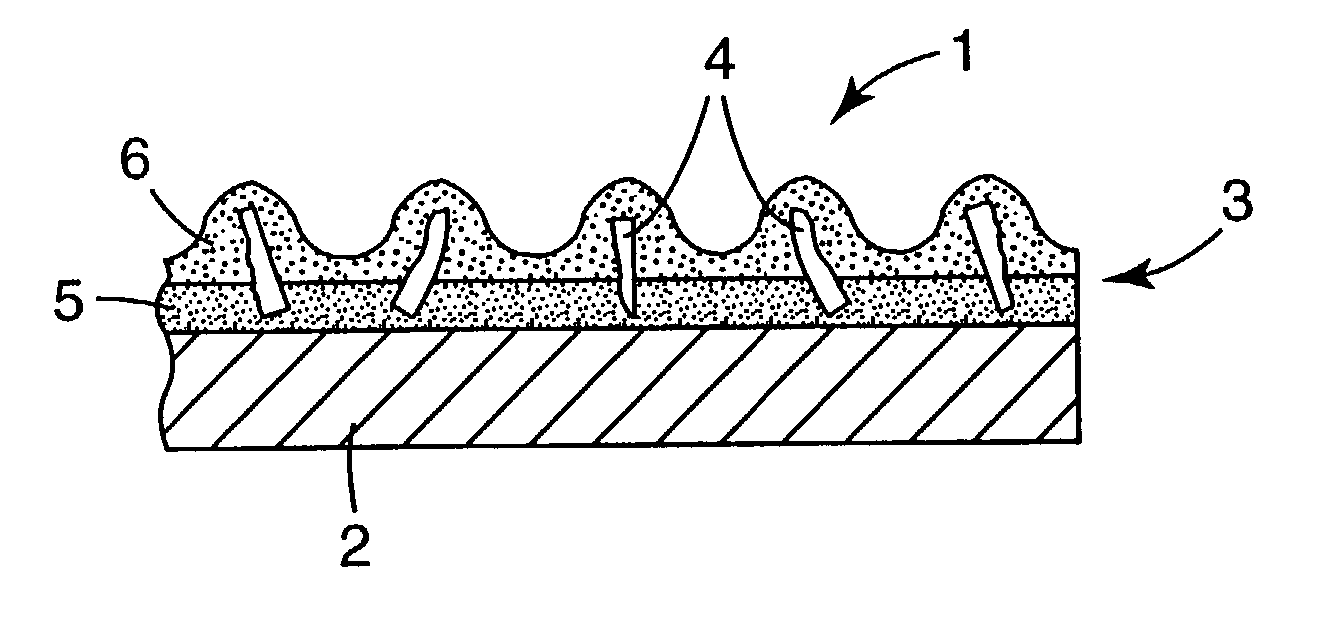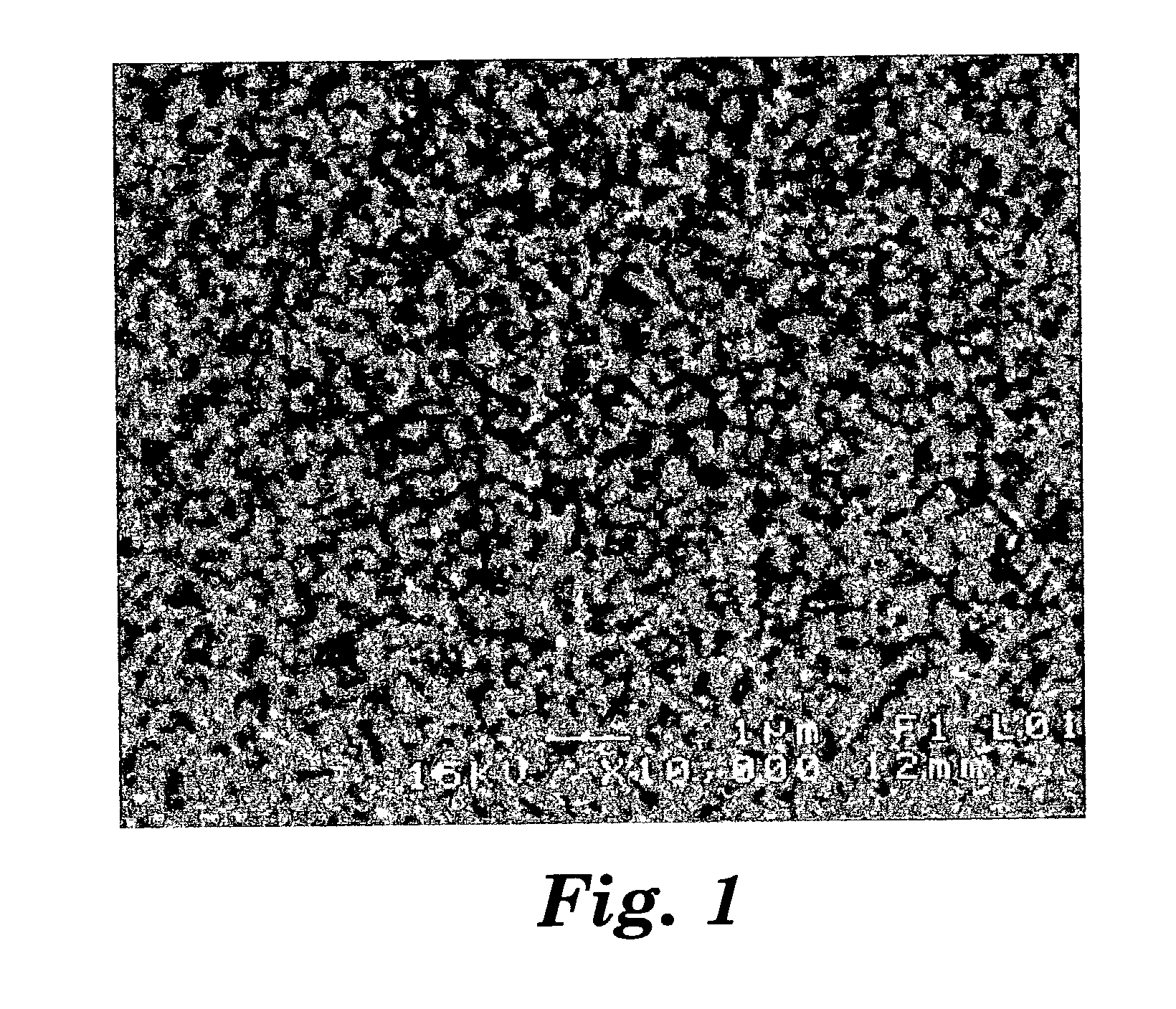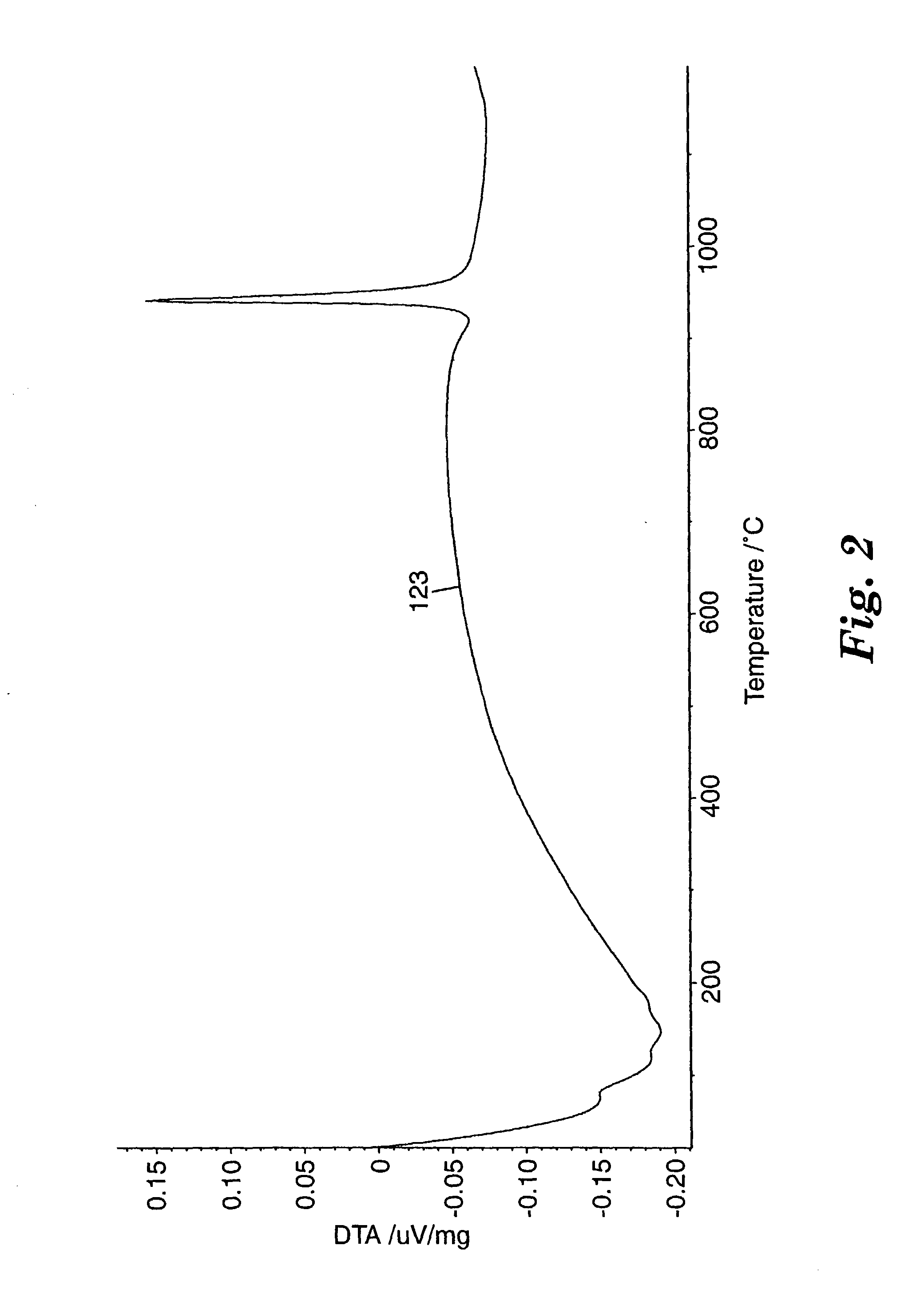Al2O3-Y2O3-ZrO2/HfO2 materials, and methods of making and using the same
a technology of al2o3y2o3zro2 and hfo2 materials, which is applied in the field of al2o3y2o3zro2/hfo2 materials, and methods of making and using the same. it can solve the problems of many properties of known glasses and glass-ceramics limited by the intrinsic properties of glass-formers, and the mechanical properties of glass-ceramics generally inferior, and the hardness and strength are limited by such glass-form
- Summary
- Abstract
- Description
- Claims
- Application Information
AI Technical Summary
Benefits of technology
Problems solved by technology
Method used
Image
Examples
example 1
[0164] A polyethylene bottle was charged with 263.5 grams of alumina particles (obtained under the trade designation "APA-0.5" from Condea Vista, Tucson, Ariz.), 143.5 grams of yttrium oxide particles (obtained from H. C. Starck, Newton, Mass.), 93 grams of zirconium oxide particles (with a nominal composition of 100 percent by weight (wt-%) ZrO.sub.2 (+HfO.sub.2); obtained under the trade designation "DK-2" from Zirconia Sales, Inc. of Marietta, Ga.) and 300 grams of isopropyl alcohol. About 800 grams of the zirconia milling media (obtained from Tosoh Ceramics, Division of Bound Brook, N.J., under the trade designation "YTZ") were added to the bottle, and the mixture was milled at 120 revolutions per minute (rpm) for 24 hours. After the milling, the milling media were removed and the slurry was poured onto a glass ("PYREX") pan where it was dried using a heat-gun. The dried mixture was ground with a mortar and pestle and screened through a 70-mesh screen (212-micrometer opening siz...
examples 2-16
[0171] Examples 2-16 beads were prepared as described in Example 1, except the raw materials and the amounts of raw materials used are listed in Table 1, below, and the milling of the raw materials was carried out in 90 ml of isopropyl alcohol with 200 grams of the ziconia media (obtained from Tosoh Ceramics, Division of Bound Brook, N.J., under the designation "YTZ") at 120 rpm for 24 hours. The sources of the raw materials used are listed in Table 2, below.
1TABLE 1 Weight percent of Example components Batch amounts, g 2 Y.sub.2O.sub.3: 28.08 Y.sub.2O.sub.3: 14.04 Al.sub.2O.sub.3: 58.48 Al.sub.2O.sub.3: 29.24 ZrO.sub.2: 13.43 ZrO.sub.2: 6.72 3 Y.sub.2O.sub.3: 27.6 Y.sub.2O.sub.3: 13.8 Al.sub.2O.sub.3: 57.5 Al.sub.2O.sub.3: 23.75 ZrO.sub.2: 14.9 ZrO.sub.2: 7.45 4 Y.sub.2O.sub.3: 27.44 Y.sub.2O.sub.3: 13.72 Al.sub.2O.sub.3: 57.14 Al.sub.2O.sub.3: 28.57 ZrO.sub.2: 15.43 ZrO.sub.2: 7.71 5 Y.sub.2O.sub.3: 28.7 Y.sub.2O.sub.3: 14.35 Al.sub.2O.sub.3: 55.7 Al.sub.2O.sub.3: 27.85 ZrO.sub.2:...
PUM
| Property | Measurement | Unit |
|---|---|---|
| crystallite size | aaaaa | aaaaa |
| crystallite size | aaaaa | aaaaa |
| crystallite size | aaaaa | aaaaa |
Abstract
Description
Claims
Application Information
 Login to View More
Login to View More - R&D
- Intellectual Property
- Life Sciences
- Materials
- Tech Scout
- Unparalleled Data Quality
- Higher Quality Content
- 60% Fewer Hallucinations
Browse by: Latest US Patents, China's latest patents, Technical Efficacy Thesaurus, Application Domain, Technology Topic, Popular Technical Reports.
© 2025 PatSnap. All rights reserved.Legal|Privacy policy|Modern Slavery Act Transparency Statement|Sitemap|About US| Contact US: help@patsnap.com



